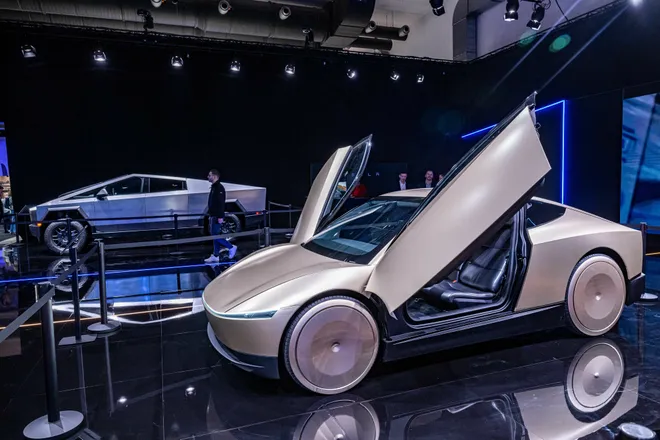Tesla’s entry into the Robotaxi market marks a significant shift in the company’s business model, moving from one-time hardware sales to a continuous stream of software-based revenue. According to Sam Korus, ARK Invest’s Director of Research for Autonomous Technology & Robotics, the launch of Robotaxis is set to make up nearly 90% of Tesla’s forecasted enterprise value.

Tesla’s upcoming launch of Robotaxis marks a potential turning point in its business strategy, transitioning from a traditional car manufacturer to a mobility service provider. The move represents more than just a product update; it signals the company’s ambition to tap into the recurring revenue opportunities typically associated with software platforms rather than hardware alone.
While the concept of autonomous ride-sharing is not new, Tesla’s scale, data advantage, and cost efficiencies could provide a competitive edge in a market where affordability, reliability, and convenience are critical to user adoption. This launch could position Tesla to compete directly with established autonomous players such as Waymo and even disrupt ride-share giants like Uber and Lyft.
A transformative shift in Tesla’s revenue model
According to Sam Korus, the Robotaxi launch reflects a “fundamental business model shift for Tesla.” He explains, “The company will go from one-time hardware sales to recurring revenue at software-like margins. Our research suggests that the Tesla model robotaxi makes up close to 90% of the forecasted enterprise value.”
This shift implies a substantial change in how the company’s value is calculated, moving from upfront vehicle sales to long-term earnings driven by software and autonomous services. It also suggests Tesla could become increasingly resilient to fluctuations in hardware demand as recurring mobility services gain traction.
Real-world data advantage and scalable infrastructure
Tesla’s biggest advantage, according to Sam, is the huge amount of real-world driving data it has collected. This data is very important for building safe and reliable self-driving systems. “In relation to Waymo, Tesla has roughly 50 times more advantage in real-world driving data, which should help it scale rapidly and solve corner cases,” Sam explains.
This data-centric approach may allow Tesla to optimise and expand its fleet more quickly than competitors. The company’s vertically integrated manufacturing and end-to-end software development are also seen as strategic strengths that enhance its ability to scale both production and services.
Lower operating costs could drive consumer adoption
A key component of Tesla’s projected success in the robotaxi market is cost. Sam notes that Tesla’s vehicles are more affordable to produce due to the company’s lean manufacturing practices and minimalist hardware design. He adds, “Our research suggests that at scale, without Light Detection and Ranging (LiDAR) and other unnecessary hardware, Tesla’s cost per mile could be 30-40% lower than Waymo’s, thanks to its vertically integrated manufacturing.”
This lower cost per mile is expected to be a decisive factor for consumers in choosing between mobility options. As Sam points out, “When it comes to rideshare apps, many customers choose whichever is cheapest and fastest. Tesla’s pricing will be hard to beat in the market.”
Comparing scale: Tesla vs. Waymo
While Waymo has had a six-year head start in the autonomous ride-share space, its growth in fleet size has been modest. Sam highlights the contrast: “Waymo launched its first commercial autonomous ride-share in 2018. Over six years later, their fleet is roughly 1,500 cars. Over the next year, they plan to build 2,000 more.”
He compares this with Tesla’s much larger manufacturing ability, saying, “But this is just a drop in the ocean compared to the capacity of Tesla, which makes around 5,000 cars a day.” Tesla’s strong production power means it could launch its robotaxi service much faster than its competitors, possibly gaining a large share of the market once it gets the necessary approvals.
Shikha Negi is a Content Writer at ztudium with expertise in writing and proofreading content. Having created more than 500 articles encompassing a diverse range of educational topics, from breaking news to in-depth analysis and long-form content, Shikha has a deep understanding of emerging trends in business, technology (including AI, blockchain, and the metaverse), and societal shifts, As the author at Sarvgyan News, Shikha has demonstrated expertise in crafting engaging and informative content tailored for various audiences, including students, educators, and professionals.








